An Interview with River House Co-Founder Melissa Auf der Maur
A woman with her back to the camera gesturing in one of the River House Project’s updated work spaces.
A historic school building in Hudson has been reclaimed after decades of abandonment to serve as an anchor of the local creative community. River House Project co-founders Melissa Auf der Maur and Tony Stone saw opportunity in the 19,000-square foot building. After a thorough, years-long restoration, River House has been transformed from a deteriorating vacant building into a state-of-the-art workspace. It fosters creativity and collaboration focused on providing a one-of-a-kind facility for professionals working in film, media, design, and innovation.
We reached out to River House Project Co-founder Melissa Auf der Maur to ask a few questions about that Award-winning project.
The building at 34 Allen Street in Hudson had been vacant for decades and was in a pretty significant state of disrepair. Where did you get the inspiration to tackle this project?
We were a few years into activating and developing Basilica Hudson, our reclaimed 1880s industrial factory on the City of Hudson waterfront — and we live across the street in our house built in 1850. The schoolhouse could be seen from both locations and were just in awe if its elegant simplicity and the potential of what the building could become. We wanted to see this building come back in use and also had the vision that it could be part of encouraging the creative economy taking root in the Hudson Valley and Capital Region. In particular we were focused on film, media, and innovation and that if we tailored the River House to work for those kinds of practices and to become a film post-production facility we knew it would work. Separately, these historic buildings have a magical way of finding owners to fall in love and to put their all into it. The building had lasted 120 years and we felt a responsibility to bring the building to a standard that would last another a century and beyond.
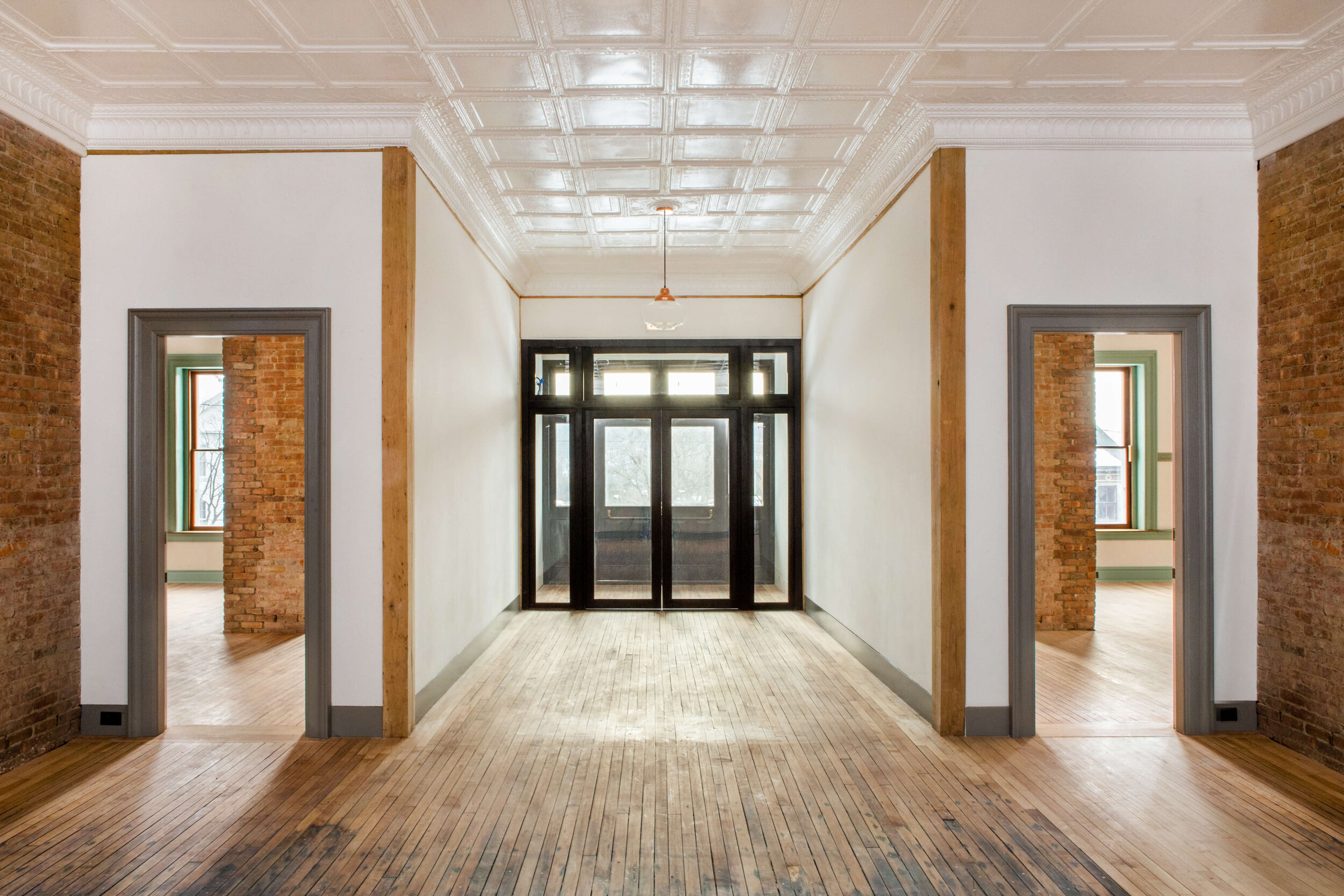
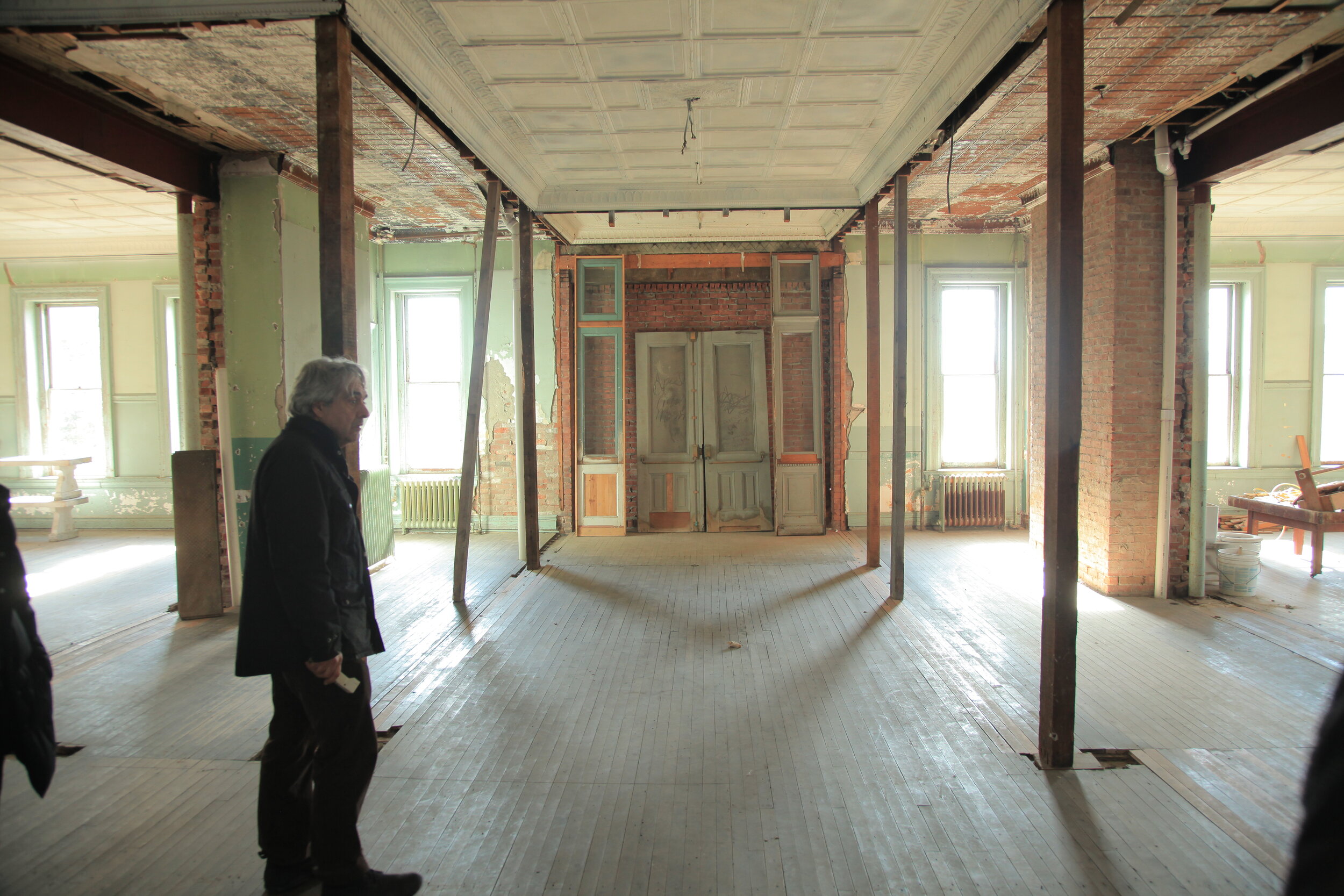

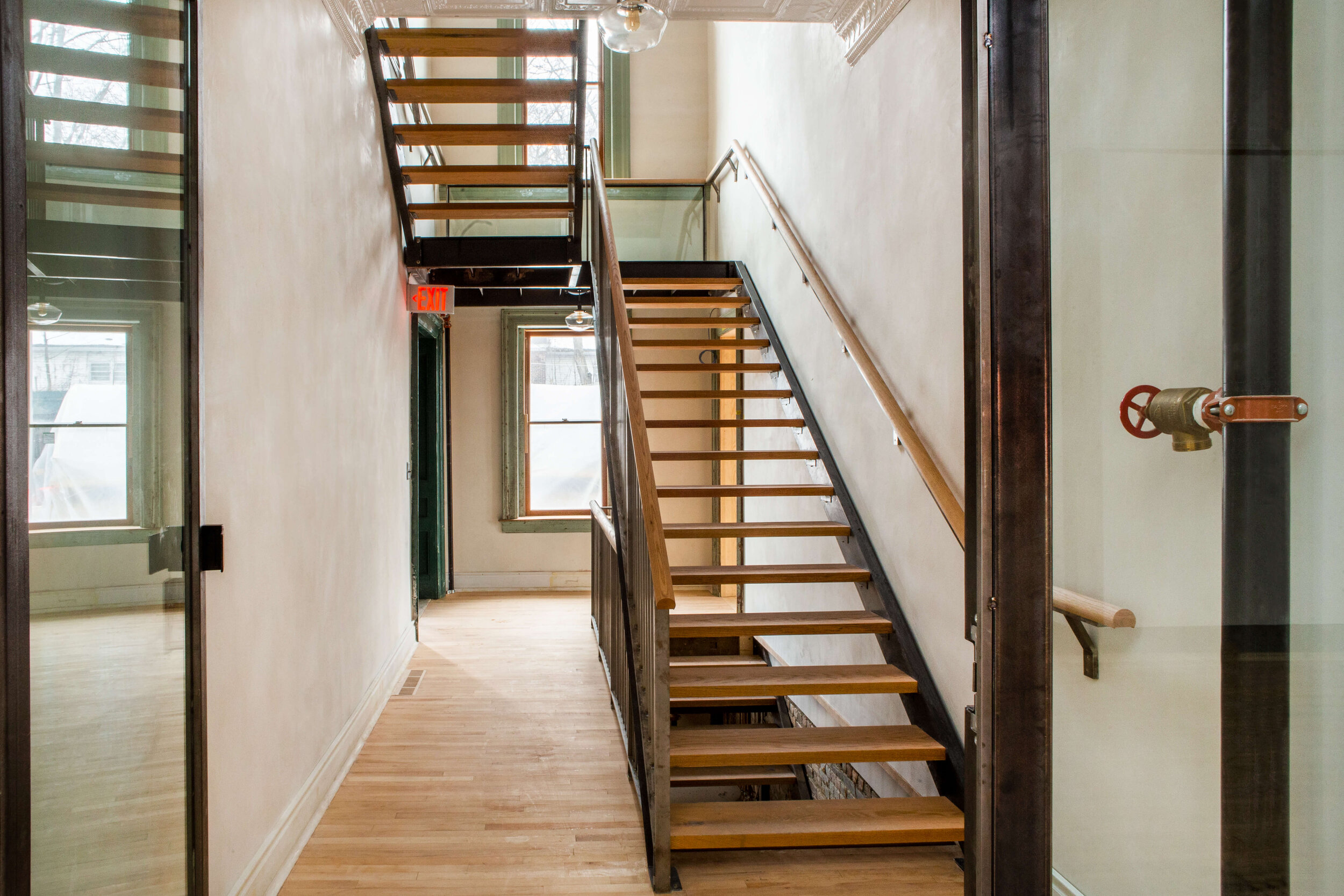
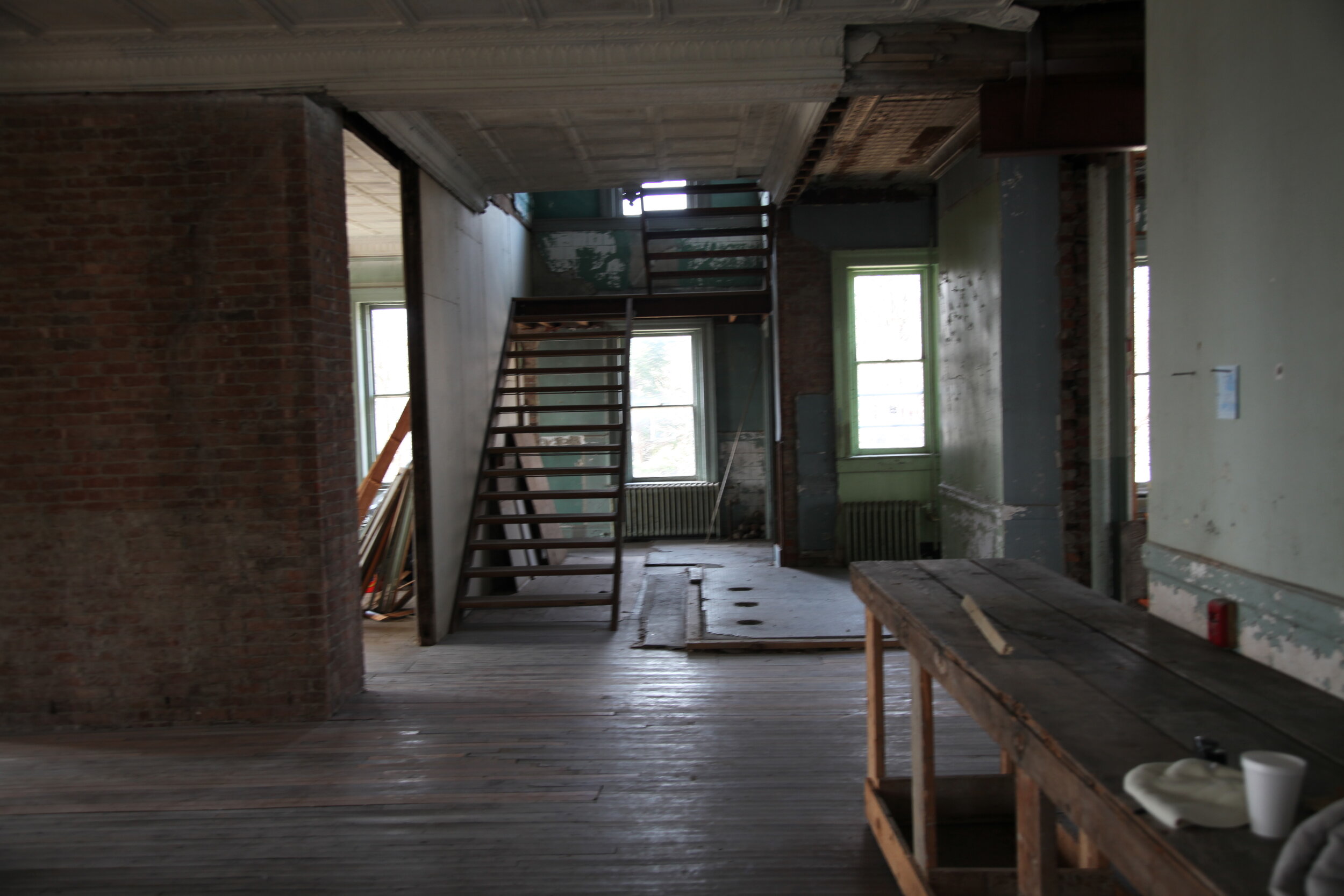
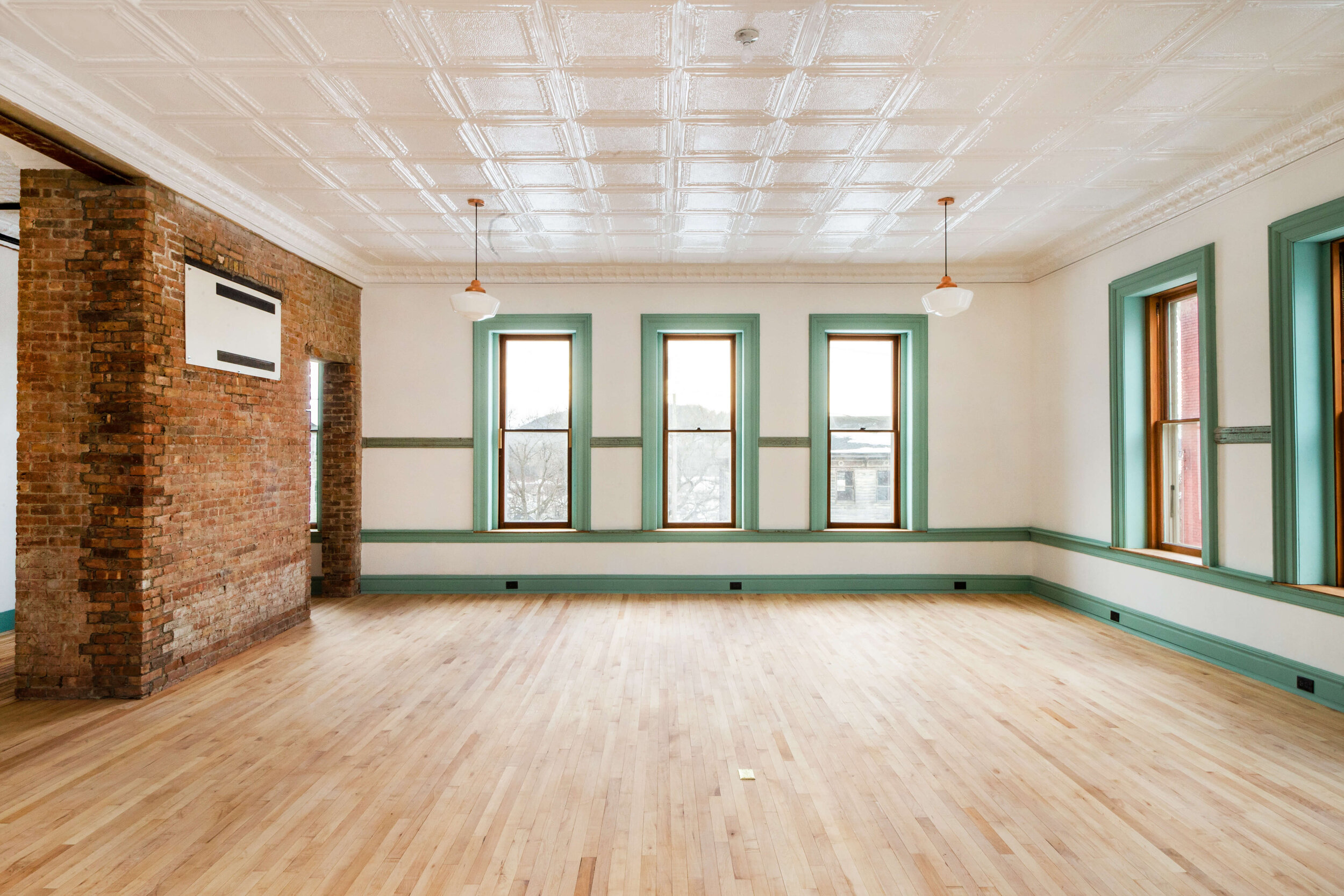
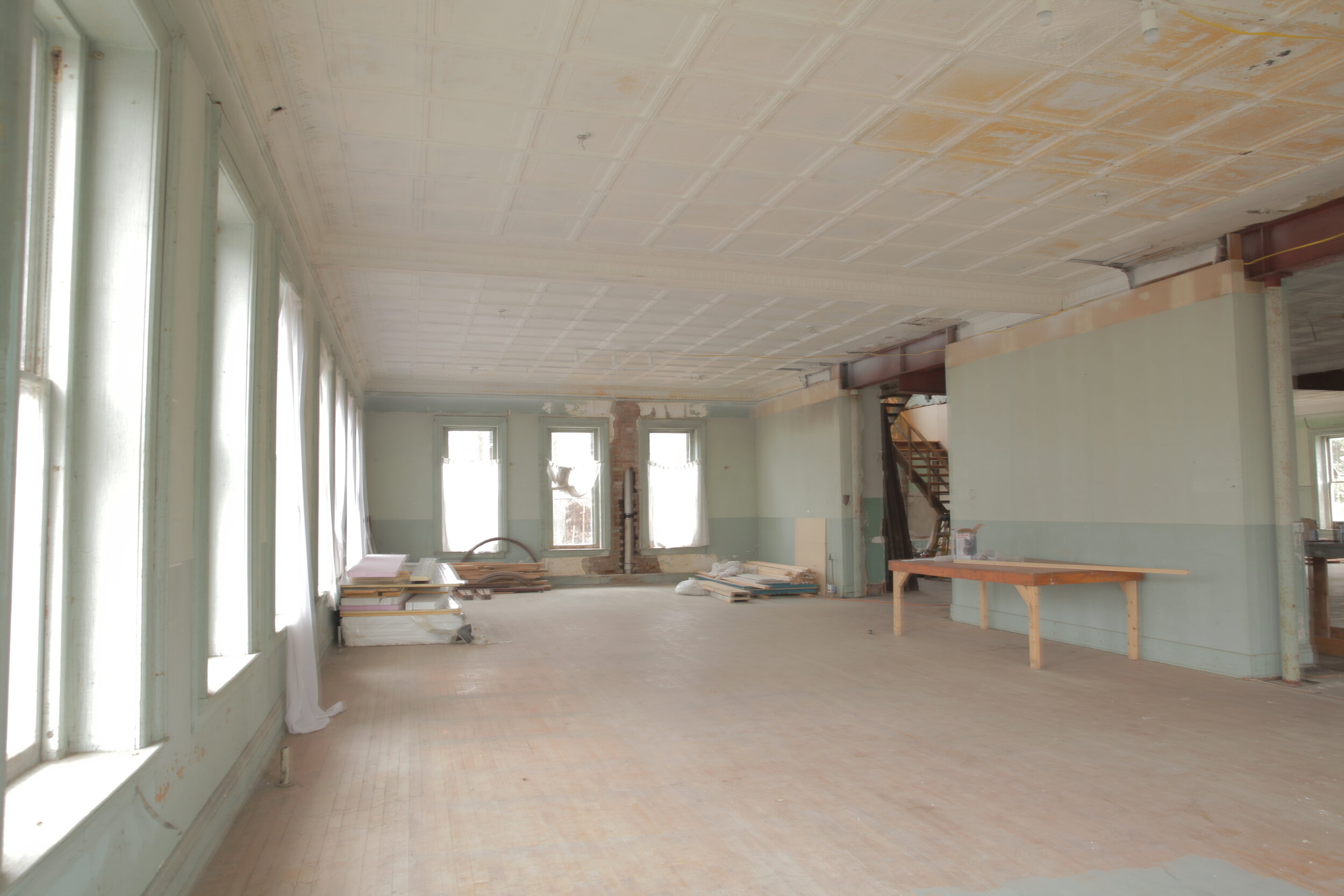
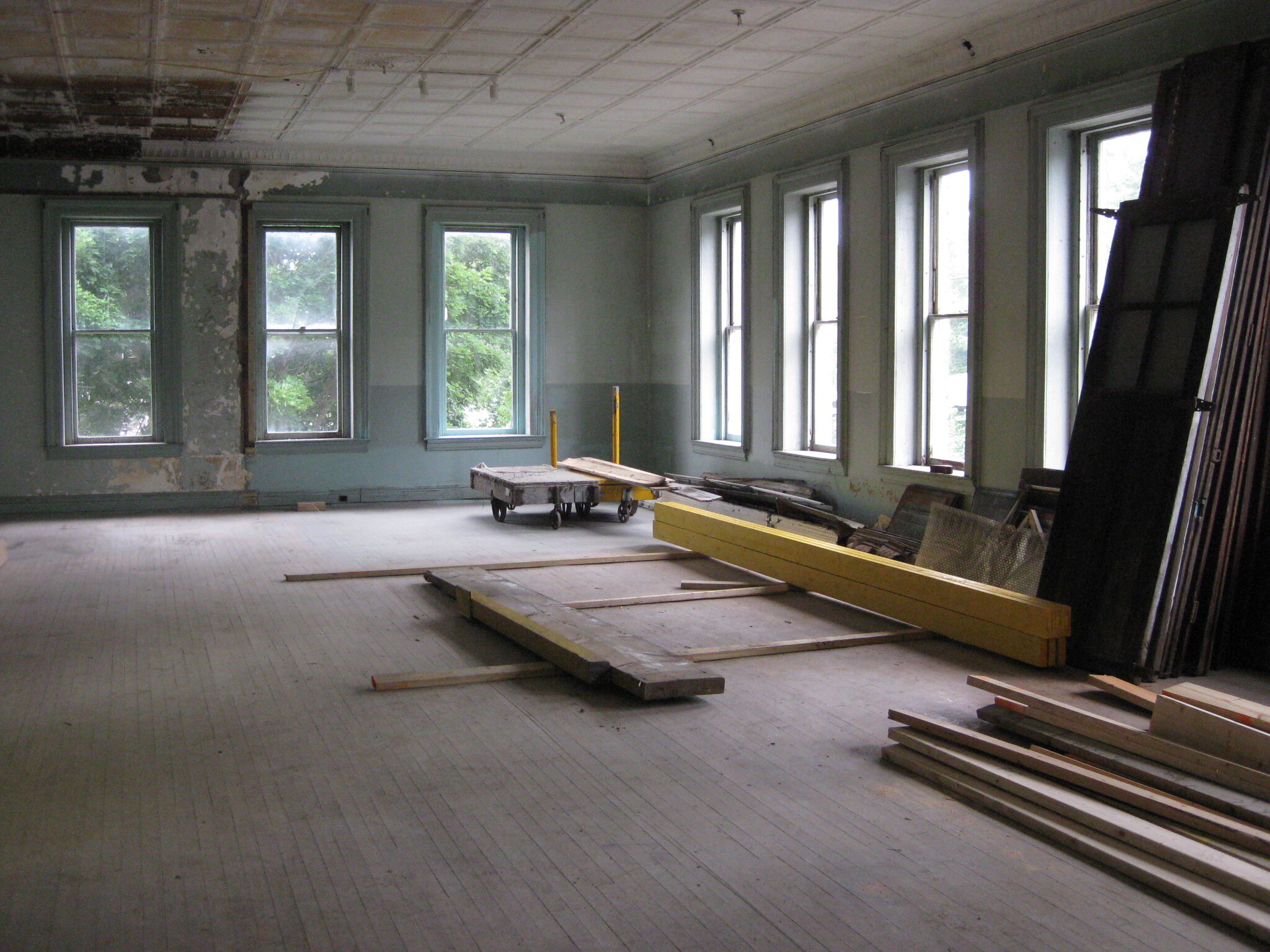
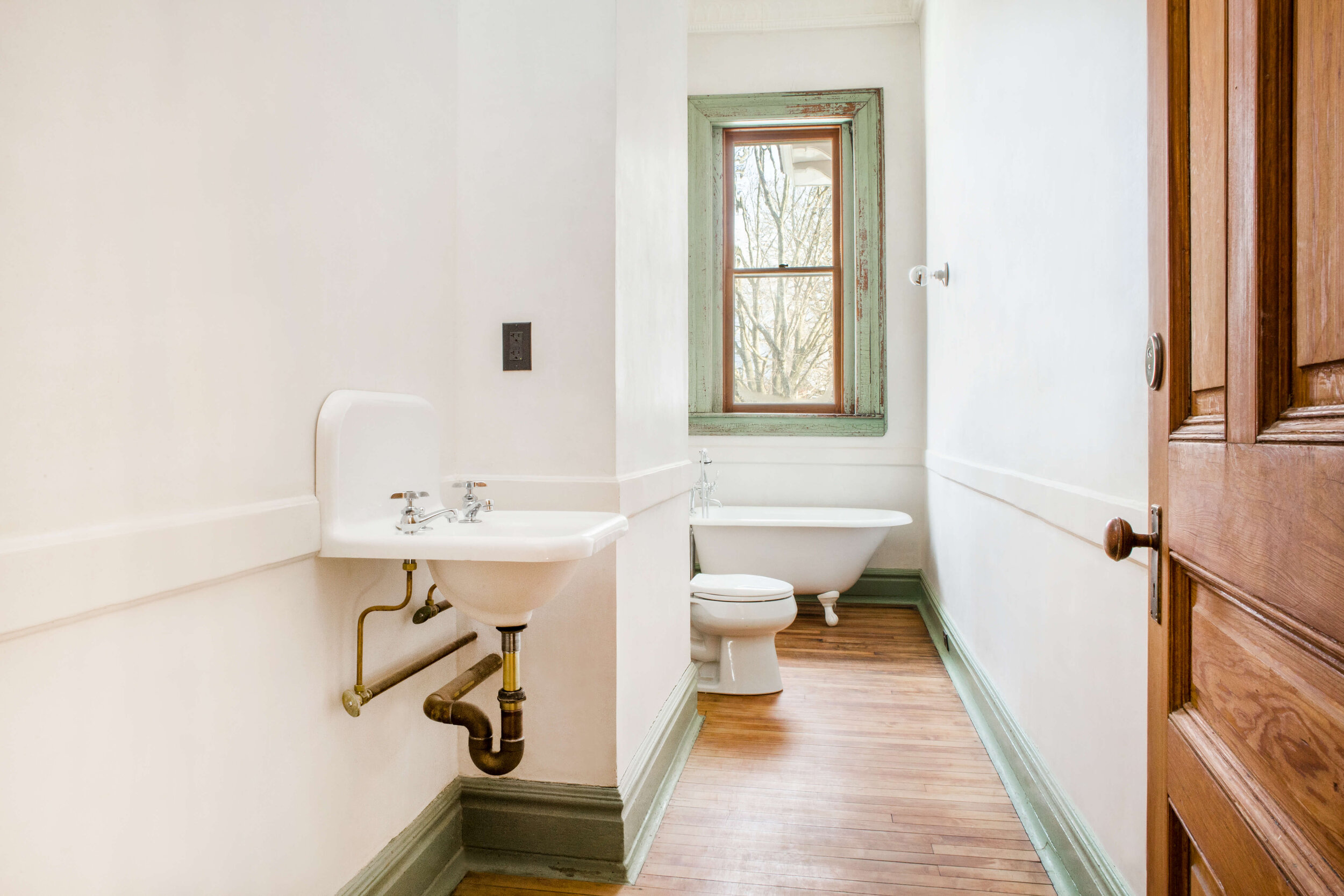
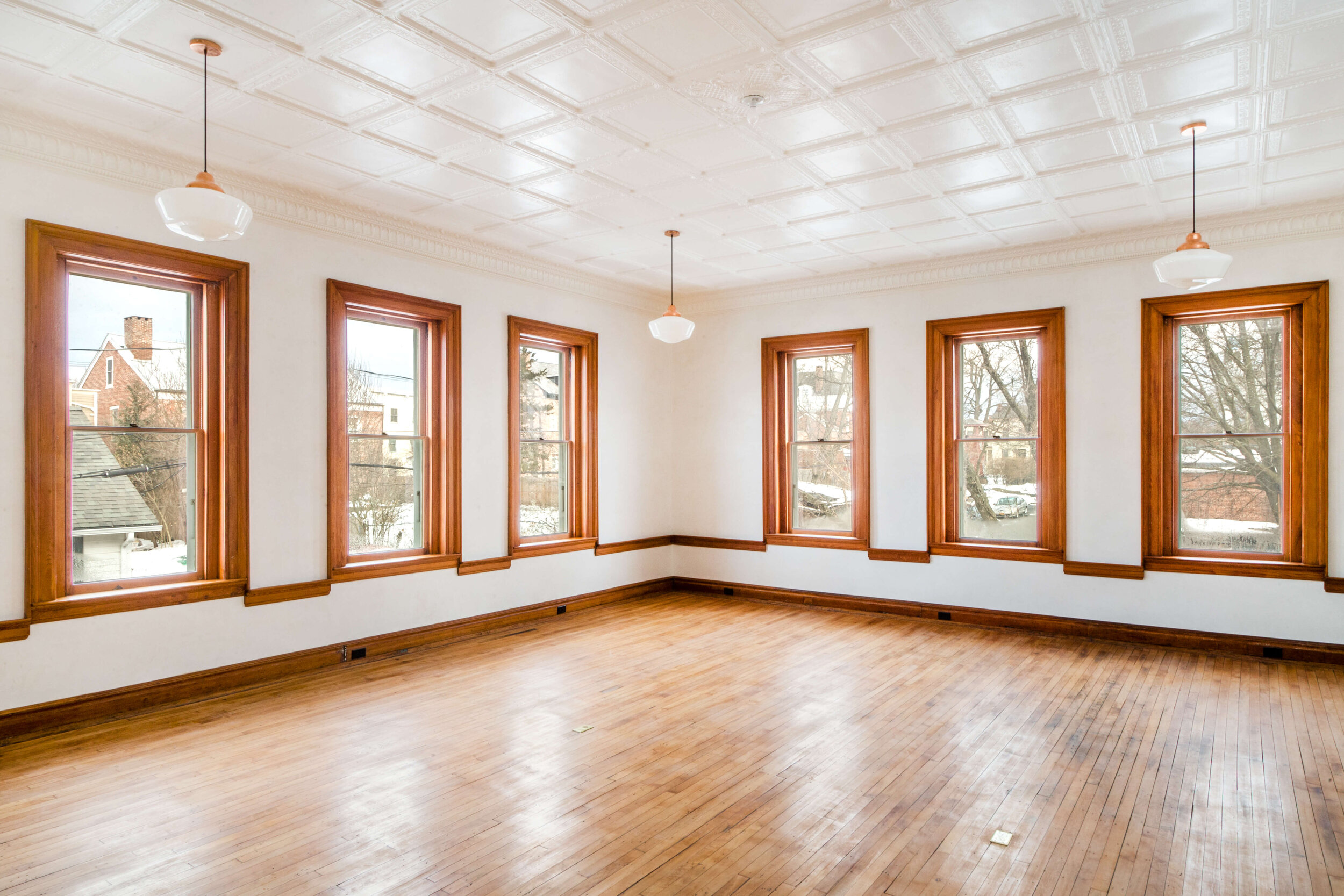
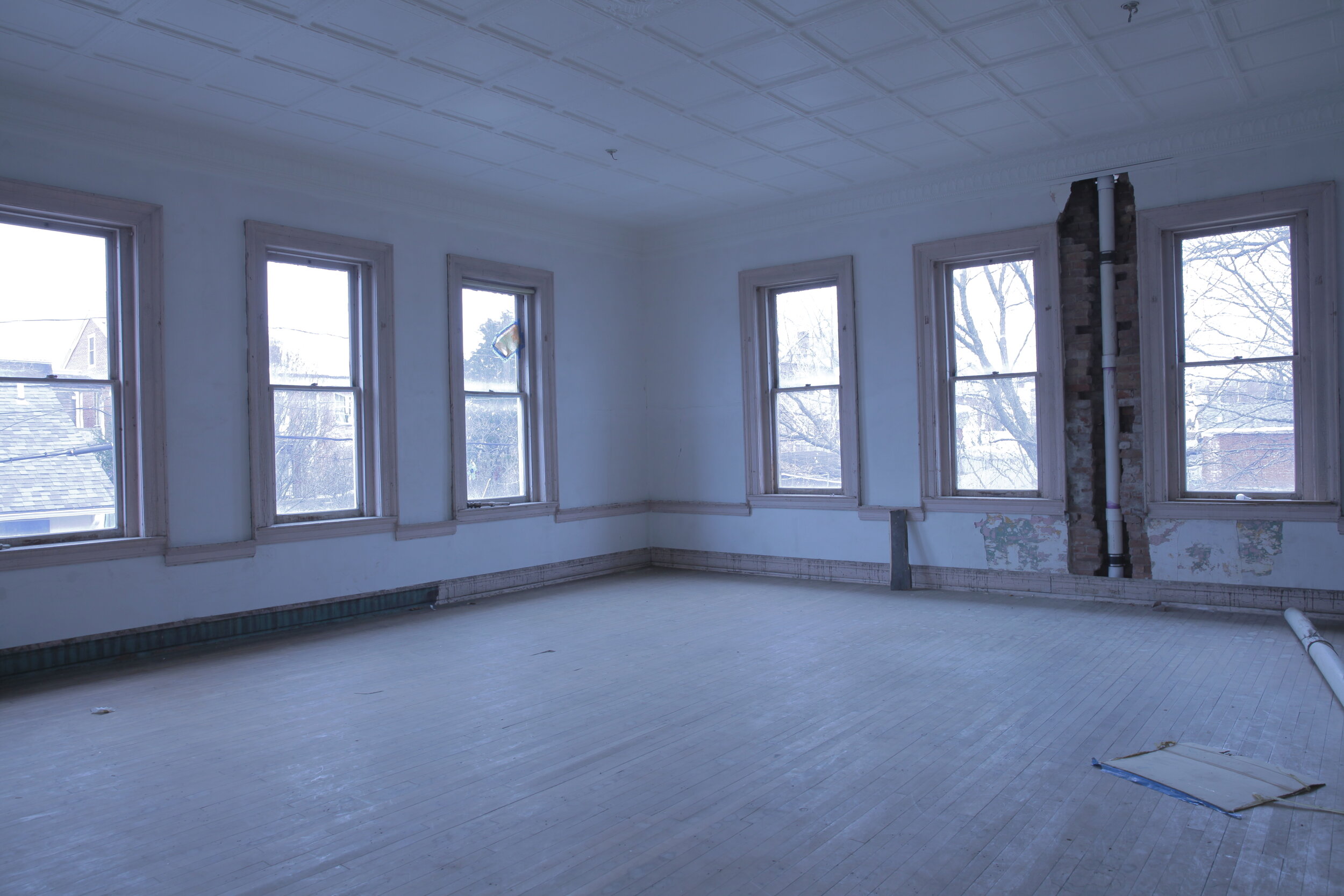
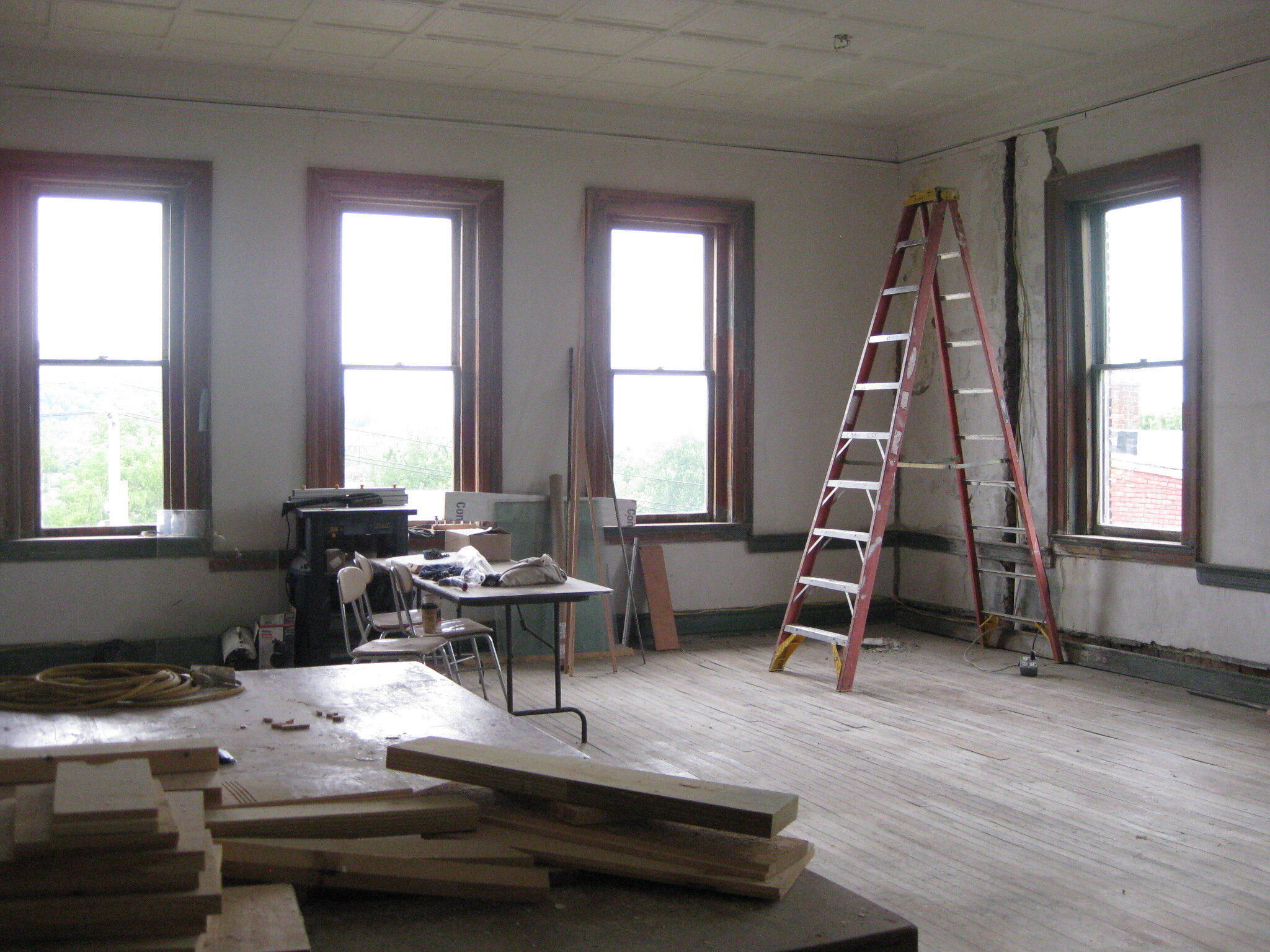
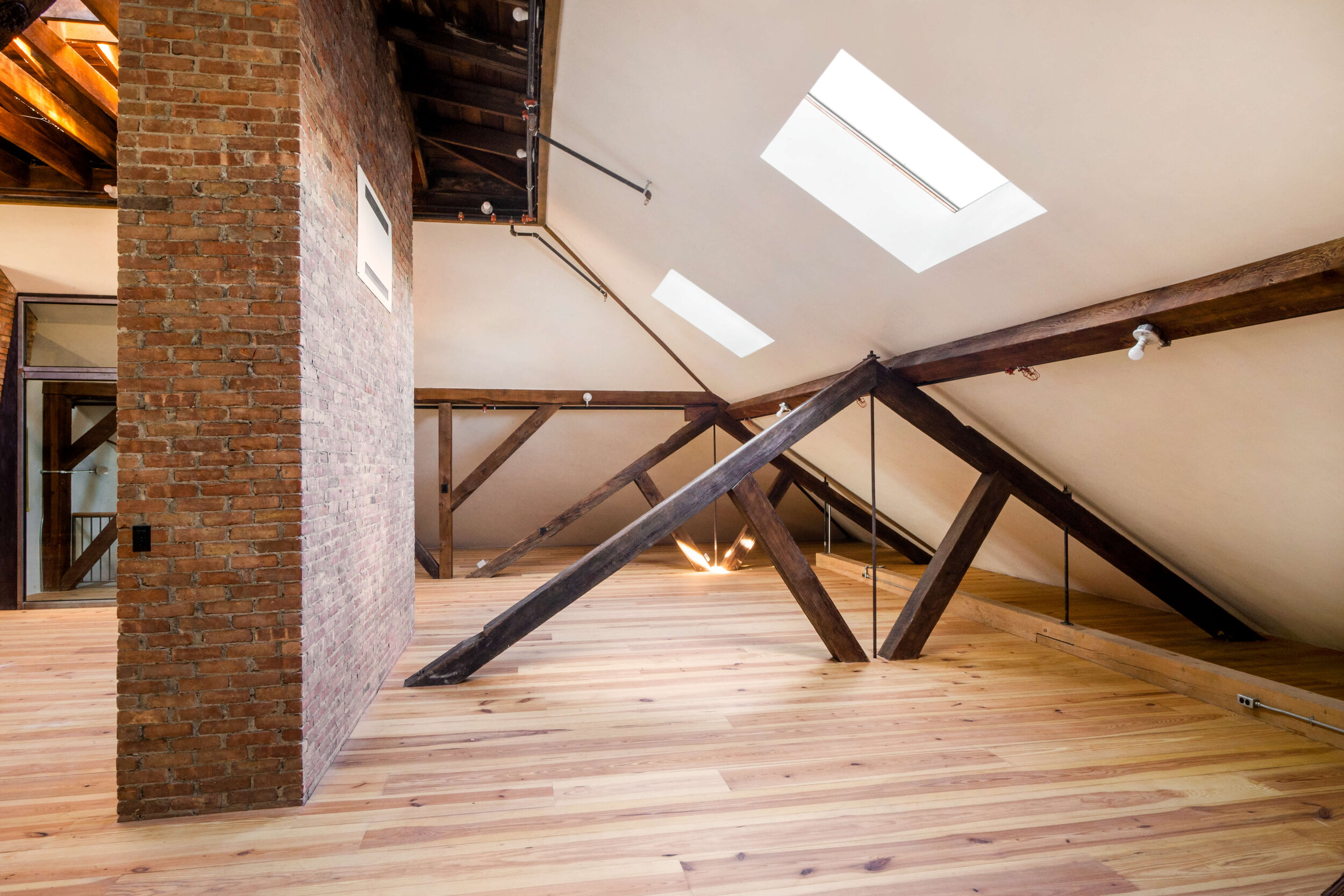
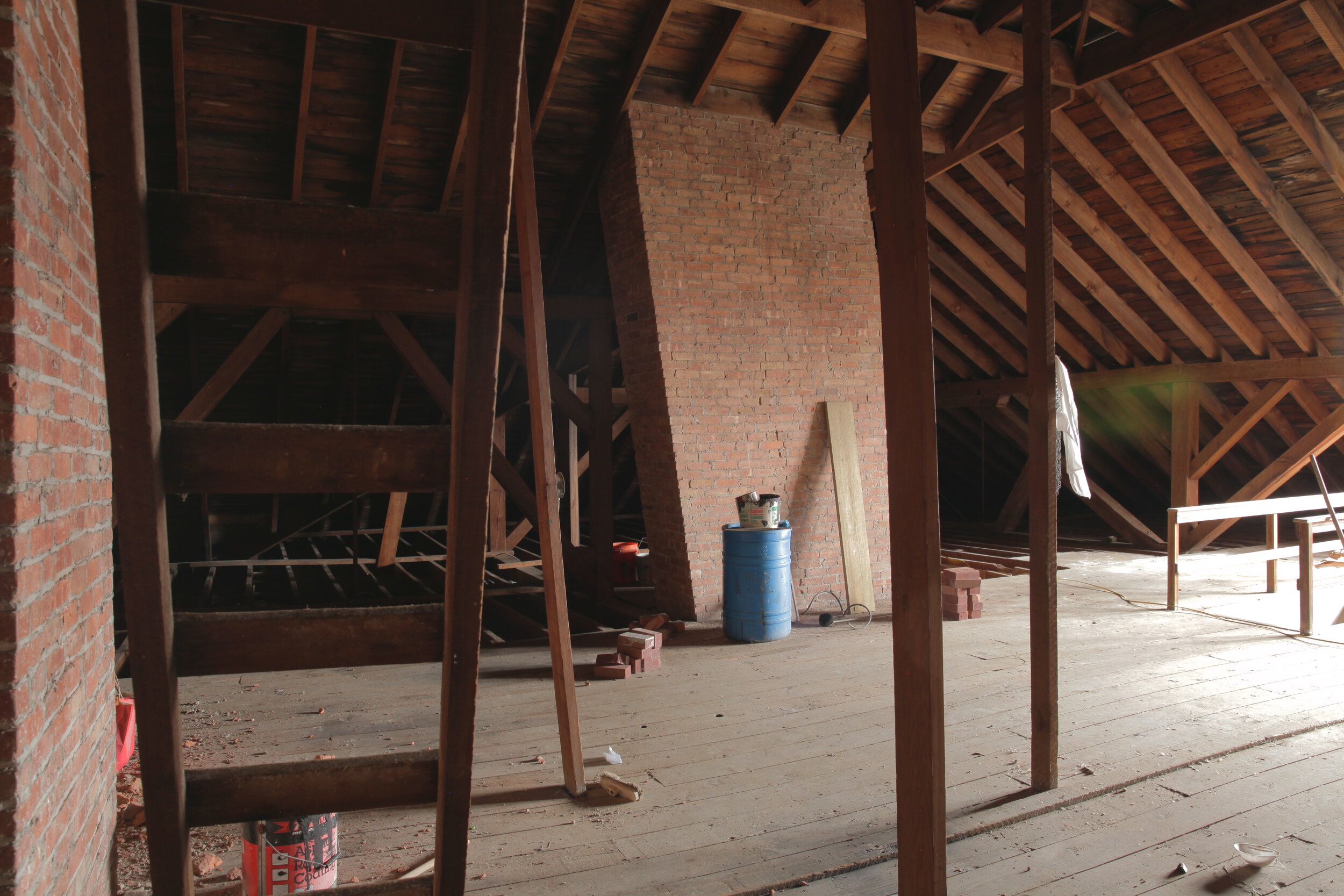
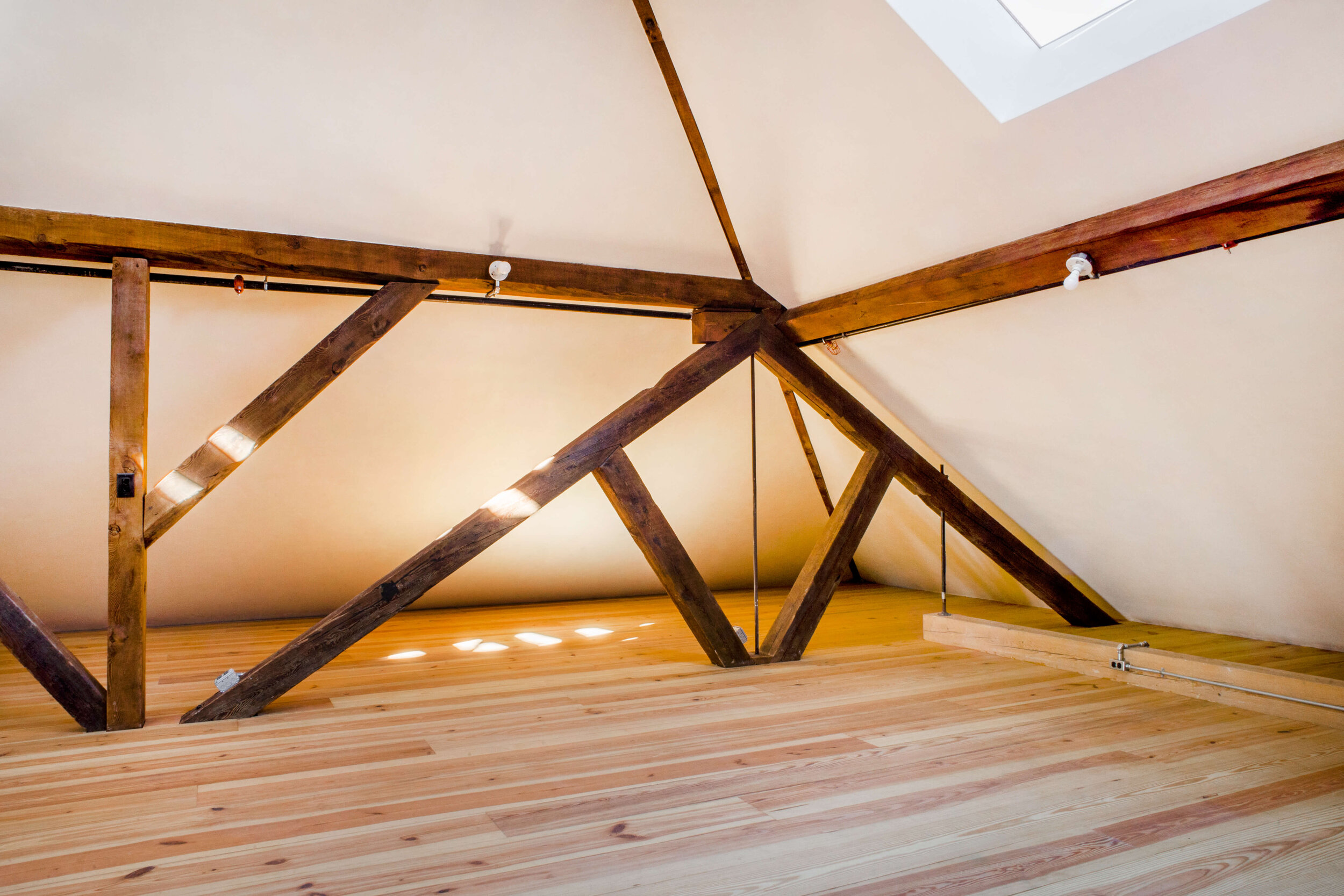
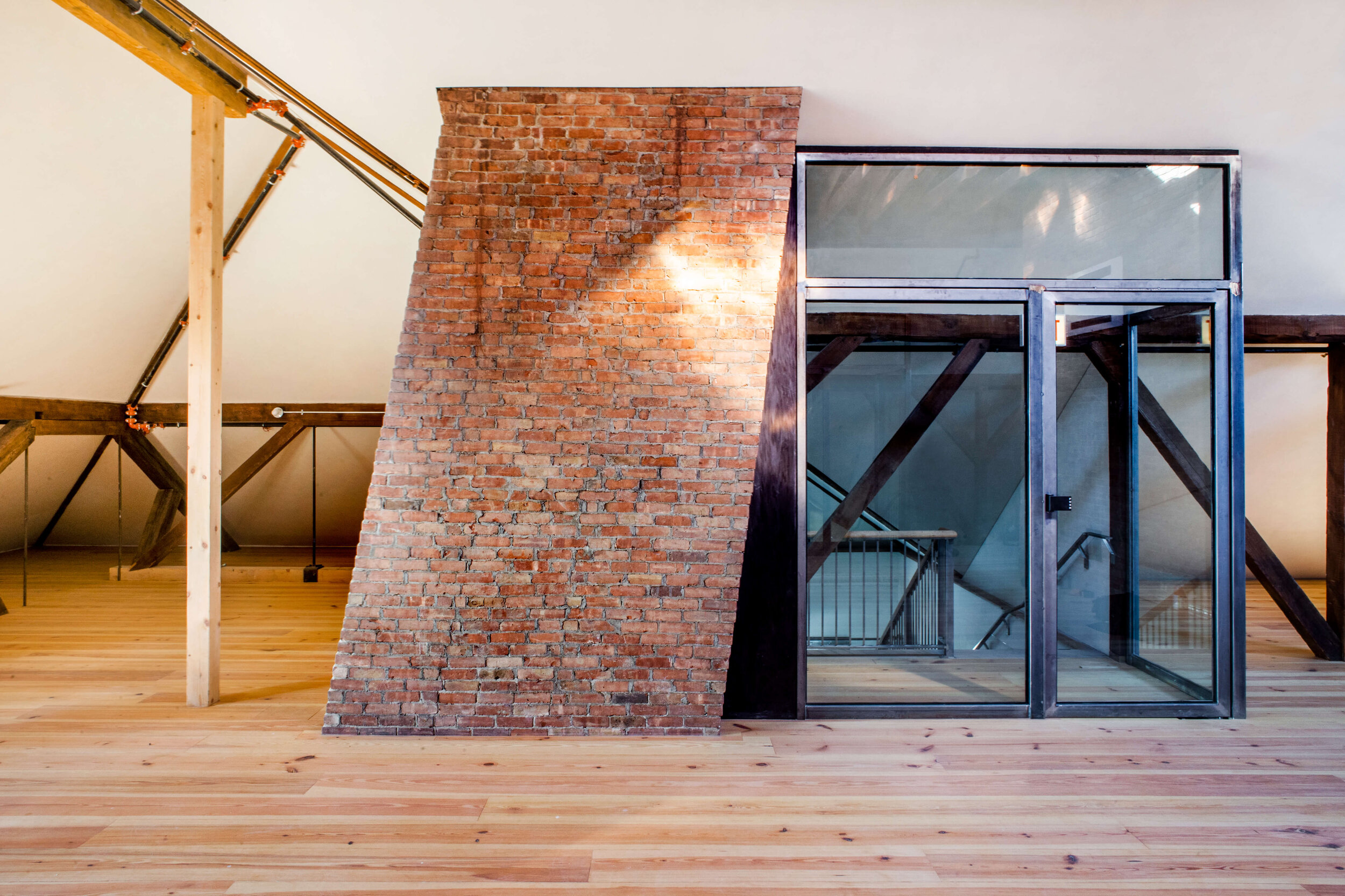



What was the biggest obstacle you had to overcome on this project?
Sitting abandoned for over 25 years led to frozen interior drain pipes which created massive water damage to the brick walls, floors, and the footings of the building. The center load of the building dropped seven inches which pushed the facade of the building out four inches. That structural damage required an elaborate system of pulling walls in and jacking up the building one floor at a time. The structural issues were the biggest obstacles, followed by excavating 18-24” of clay in the basement to maximize ceiling height, restoring 10,000 square feet of the original tin ceilings and over 100 double hung windows, and making 100 new storm windows.
Anyone familiar with the area is sure to know about you other site, Basilica Hudson. Can you tell me how rehabbing that building helped inform the work you did for River House?
The Basilica is a totally different beast than the schoolhouse, it’s from the industrial era, is much larger and more complicated, so in some ways it made an old schoolhouse seem simple and more in the realm of just a really big house. Basilica is much more rough around the edges by nature, lots of exposed brick and steel; whereas the schoolhouse has much more details and delicacies like ornate tin and box gutters, delicate old growth wood windows and a slate roof. It was really satisfying to be able to work on such fine details.
One of the most impressive aspects of your rehabilitation is the way you incorporated sustainability and green building practices into the design. Do you have any advice for other preservationists who may be able to prioritize sustainability in their own projects?
I think it is very important for people to know that being green is not only better for the planet, but is cost effective long-term and easier than anyone thinks because the technology is finally here. It is also important to have qualified installers, which we had locally with Dell’s Plumbing and Heating who were a Mitsubishi Diamond Dealer. Electric powered heat pumps have become so efficient (300-400%) that the operating costs make the system the most affordable over time. Going this route allows for heating and cooling to be part of one system with most of the mechanical systems outside, avoiding the need for utility rooms that boilers would require which would take away from commercial rental space. Also, the install requires mostly running flexible copper line sets from room to room which speeds up the install timeline and in old buildings there are usually old chases or unused chimneys to run the lines up through as we did.
Beyond the new technology, the simple old fashioned solution to energy efficiency is tight seal and good insulation. As was the case with our project, many restoration projects don’t allow insulation in or on the walls to save the ornate window trim and moldings. But we made up for it with very tight sealing weather stripping of all existing doors and windows, new storm windows and proper insulation in the roof and basement (with appropriate vapor barriers to ensure extremely low humidity). Also there is an incalculable value of a masonry building with four course brick walls in terms of thermal mass and the temperature stability it offers when heated and cooled consistently; combined with a tight building envelope, the heating and cooling load has been lower than our projections.
How has River House Project evolved since completing your restoration?
Quite well and exactly as we hoped it would. We knew that a true historic restoration, attention to detail and a commitment to green building would make this place a one of a kind place to work in. Our office spaces are fully occupied and we host the caliber of creatives, innovators and media makers that we hope to draw to the building. The project was an absolute labor of love and all whom have chosen to work out of it, practice the same ethic in their own work.
On completion, what were you most proud of?
The reclaiming of a gorgeous historic building of that size being fossil fuel free. We hope this can be a model for other historic projects, It’s the only option going forward as we need to do everything we can to minimize the existential threat that climate change poses to current and future generations.
This interview is part of our series celebrating the 2020 Excellence in Historic Preservation Award winners. You can find all the posts in this series by clicking here.
